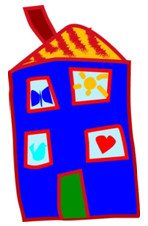
For its part in this special month, the NICHD supports research to inform outreach and training programs for parents and people who care for abused and neglected children
According to data collected through the DHHS National Child Abuse and Neglect Data System and reported in Child Maltreatment 2009, an estimated 763,000 children were exposed to incidents of child abuse and neglect in 2009. These data translate to a rate of 10.1 occurrences of child abuse/neglect for every 1,000 children for the year.
Held every April since the early 1980s, National Child Abuse Prevention Month aims to raise awareness and educate communities about ways to prevent child abuse and neglect. The Children’s Bureau, the oldest federal agency for children within the Administration for Children and Families (ACF) in the DHHS, leads the education and outreach activities, which include release of annual statistics on child abuse and neglect, candlelight vigils, and events to support prevention and treatment for victims. The Month’s “Blue Ribbon Campaigns” encourage community members to wear blue ribbons in memory of those who have died from abuse or neglect. President Obama recently made a proclamation about April as National Child Abuse Prevention Month.
Although even one incident of child abuse or neglect is too much, the ACF reported a decrease in the number of children who were exposed to abuse and neglect in 2009. Though the reduction is encouraging, efforts to prevent and eliminate child abuse and neglect continue.
The NICHD supports National Child Abuse Prevention Month by advancing research to understand the short- and long-term emotional and physical effects of child abuse and neglect. Much of this research is supported through the Social and Affective Development/Child Maltreatment and Violence (SAD/CMV) Program within the Child Development and Behavior (CDB) Branch.
“Every child deserves a safe, stable home life,” said Valerie Maholmes, Ph.D., C.A.S., director of the SAD/CMV Program. “To help achieve this objective, NICHD-supported researchers aim to make an impact in communities by focusing not only on the ‘what’ of child abuse and neglect, but also on the ‘why’.”
Understanding the consequences of child abuse and neglect, as well as the complex processes that lead or contribute to these situations are important goals of research supported through the SAD/CMV Program. In addition, the Program addresses issues related to public health, justice, social services, and educational problems associated with childhood exposure to violence. Several projects also aim to find ways to lessen the impacts of abuse for victims and families.
Among the current NICHD-supported projects related to child abuse and neglect are:
- Web-based Parenting Intervention for Mothers of Infants at Risk for Maltreatment
- Maternal Self-Regulation and Harsh Parenting
- Teleconsultation and Quality Review in Child Maltreatment
- Child Maltreatment and Honesty
- All Babies Cry: Shaken Baby Syndrome Parent Education Toolkit
- 20-Year Intergenerational Longitudinal Follow-up of Females Abused as Children
- Training Social Work Providers: Intervention For Maltreating Families of Infants
In addition, the Program supports several training projects to support a new generation of scientists as they study child abuse and neglect. Training projects include:
- What Happens Next: Households After a First-time Finding of Child Abuse
- Missed Opportunities for Diagnosis of Child Maltreatment
- Community-Level Prevention of Child Abuse and Neglect
- Preventing Medical Neglect of Children on Child Welfare
- Prevention of Child Maltreatment: A Focus on Social Norms and Corporal Punishment
Summary descriptions of these projects (PDF - 70 KB) are available.
Dr. Maholmes’ efforts extend beyond just NICHD-supported projects. She also co-chairs the NIH Child Abuse and Neglect Working Group, which reports on and coordinates NIH activities and research on child abuse and neglect. In addition, Dr. Maholmes’ Program supports the continuance of the Children’s Bureau’s National Incidence Study of Child Abuse and Neglect (NIS-4) and studies of exposure to political violence in international settings and bullying.
Though April enables agencies and organizations to bring attention to ways to prevent child abuse and neglect, the overarching goal is to encourage communities to participate in these types of prevention activities year-round. Nationwide events, such as National Child Abuse Prevention Month, aim to alert families and communities that they are not alone—there is an array of evidence-based tools, resources, and services available to help them prevent child abuse and neglect situations.
For additional information, select one of the links below:
- NICHD Child Development and Behavior (CDB) Branch
- NICHD Spotlight (2010): Strengthening Families and Communities: National Child Abuse Prevention Month
- NICHD Spotlight (2010): Taking a Stand Against Bullying
- NICHD Publication: Workshop on Children Exposed to Violence (Summary)
- American Psychological Association
- Administration for Children and Families (ACF)
- Centers for Disease Control and Prevention
Originally posted: April 4, 2011

 BACK TO TOP
BACK TO TOP